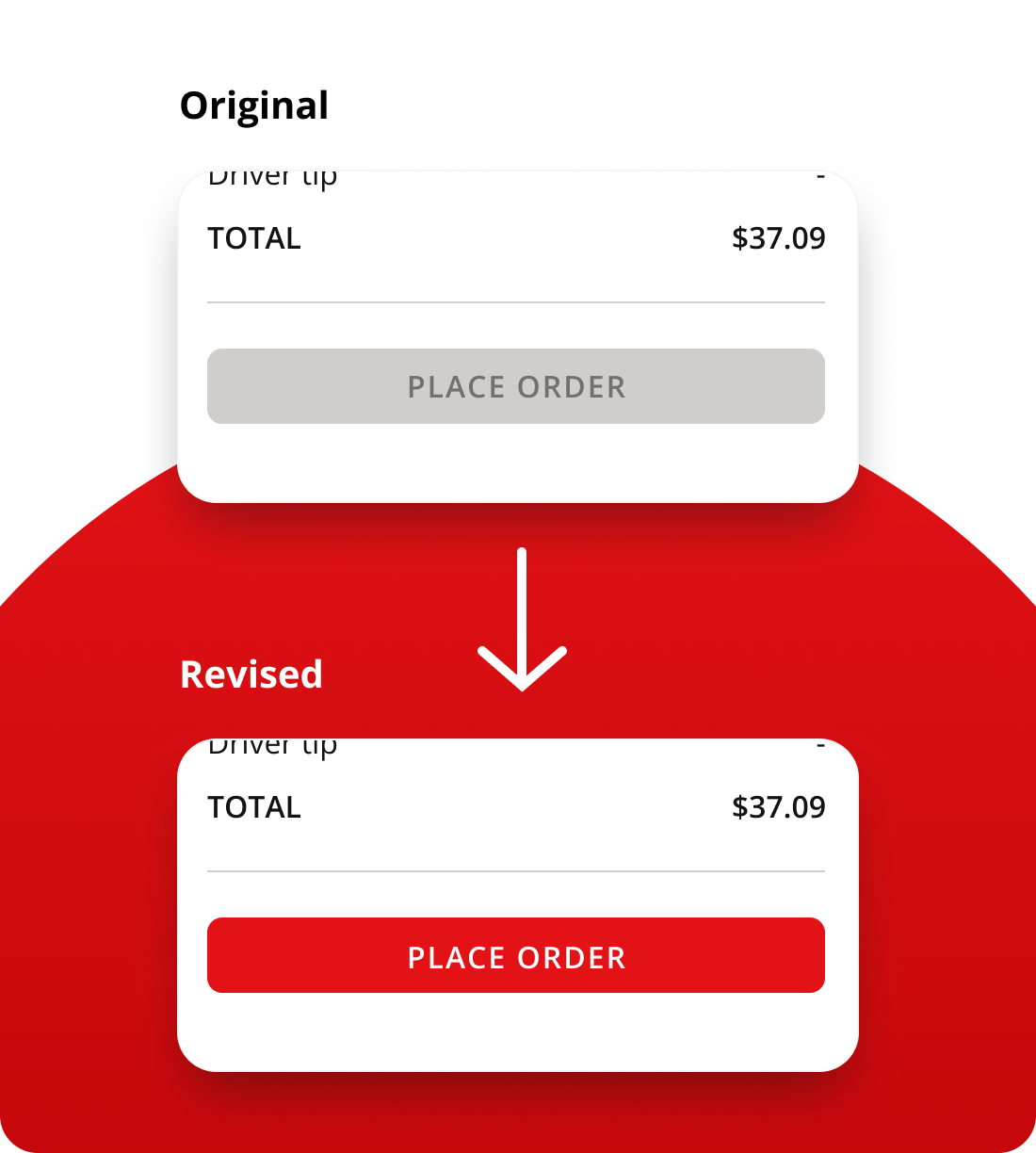Experience:
Website Cart & Checkout
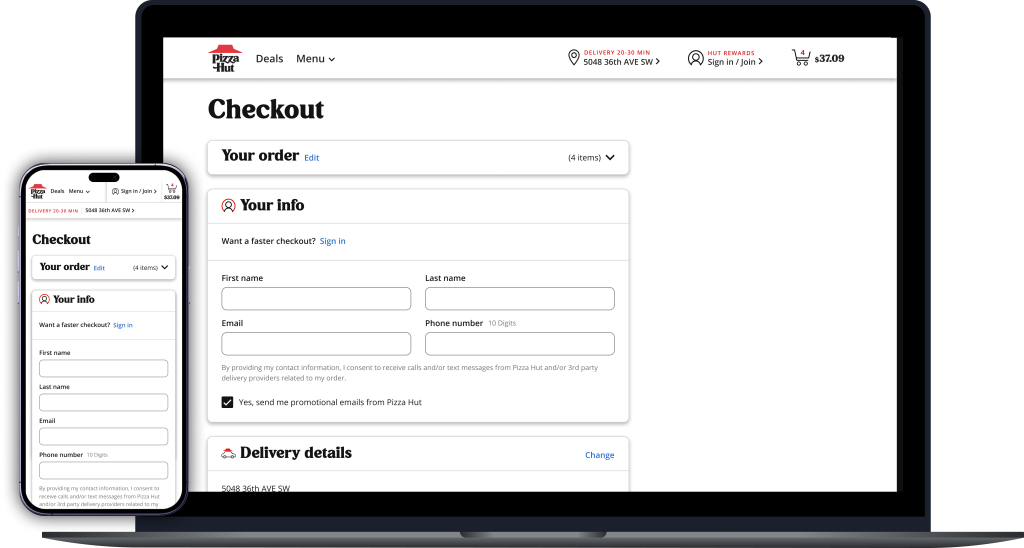
Website Cart & Checkout
Pizza Hut
Senior UX Designer II
Thoughtworks
UsableNet
Applause
This case study explores the transformation of the checkout experience made possible by a migration from a legacy PHP codebase to a modern React/JS framework. Leveraging the flexibility and speed of the new framework, the UX team reimagined the checkout flow to streamline steps, improve order accuracy, and reduce friction. By simplifying the review & pay process, the redesign aimed to build user trust, reduce cart abandonment, and enhance overall conversion rates.
As the design lead on this project, I was responsible for mapping key user flows, designing the complete user interface, developing prototypes for usability testing, and defining all relevant use cases.

Figma

Usertesting.com

Mural

Confluence

Jira
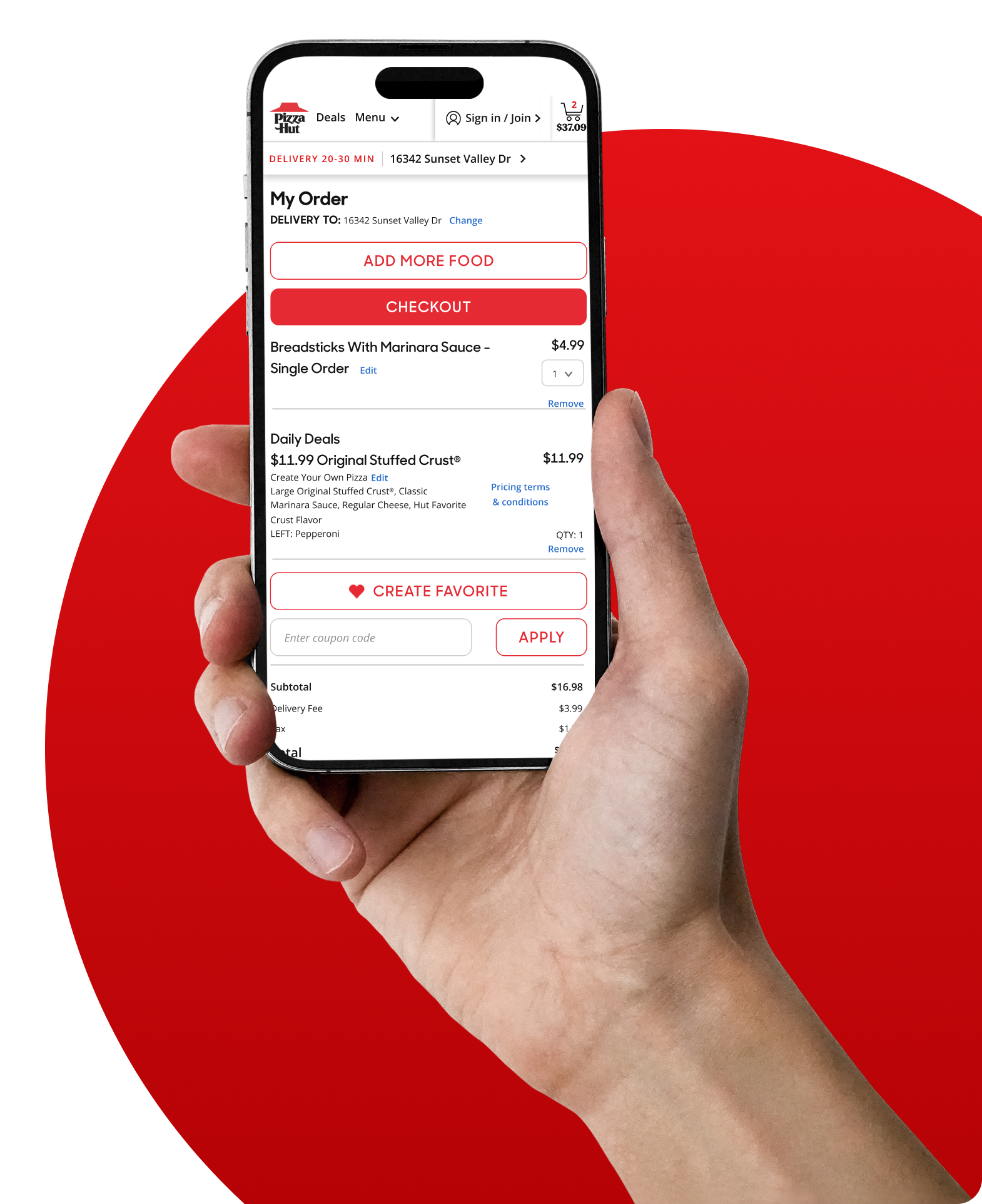
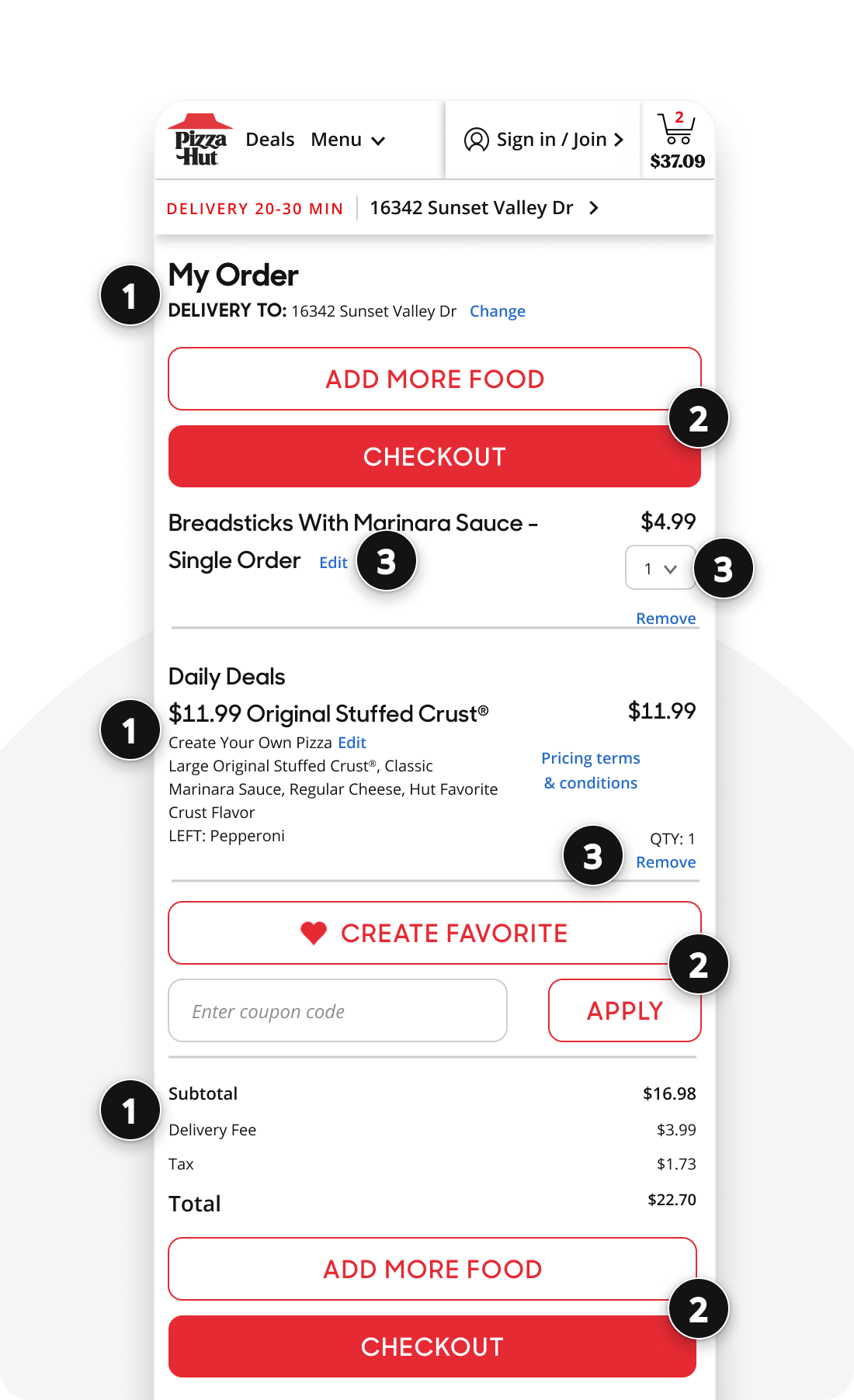
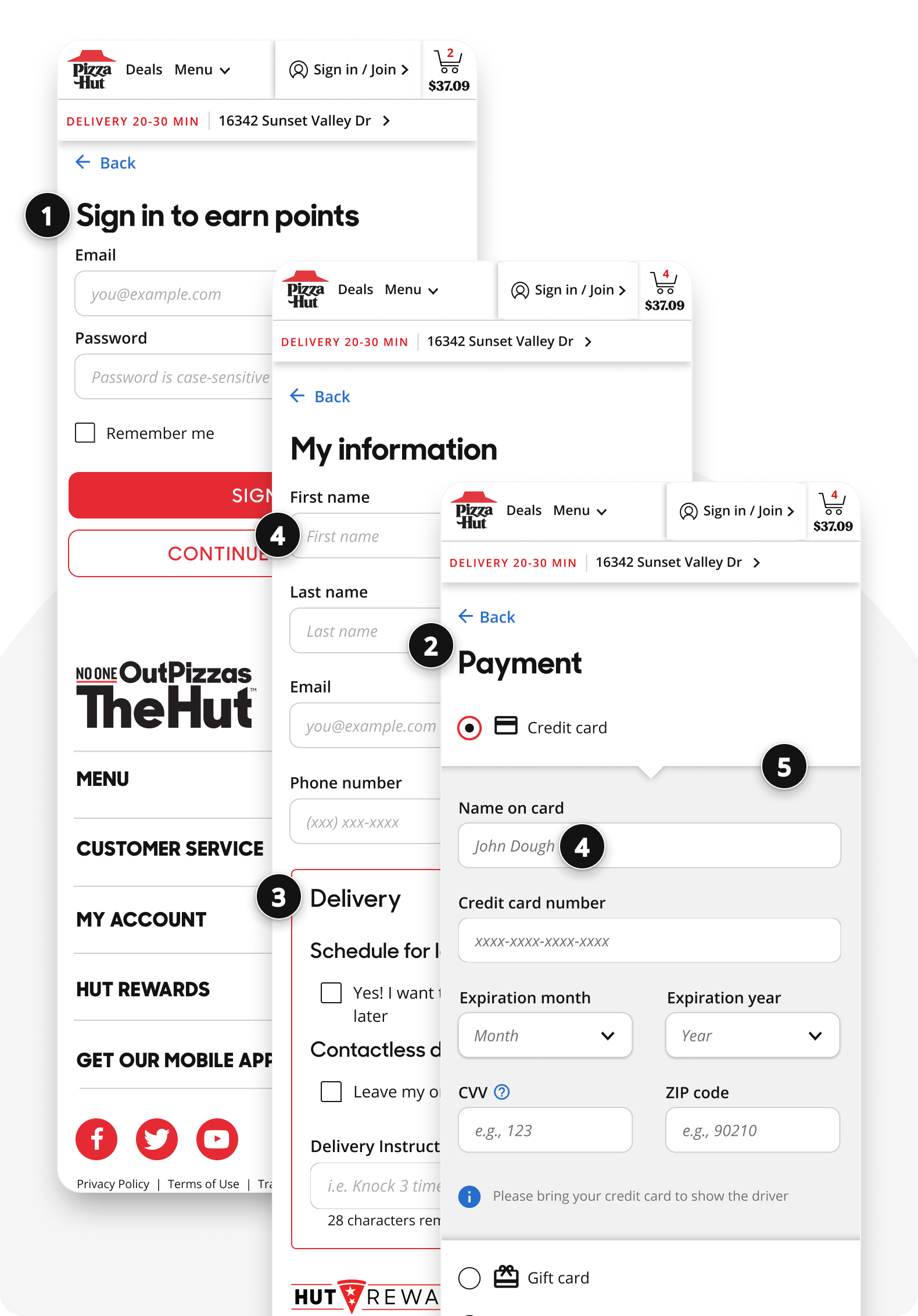
Creation and implementation of a modernized, accessible design system approach
Reimagining the cart design for easier order review to increase order accuracy
Simplify the checkout process to enhance ease of use and reduce both errors and cart abandonment
Typography Key Unlocks:
Use slider to compare old vs new
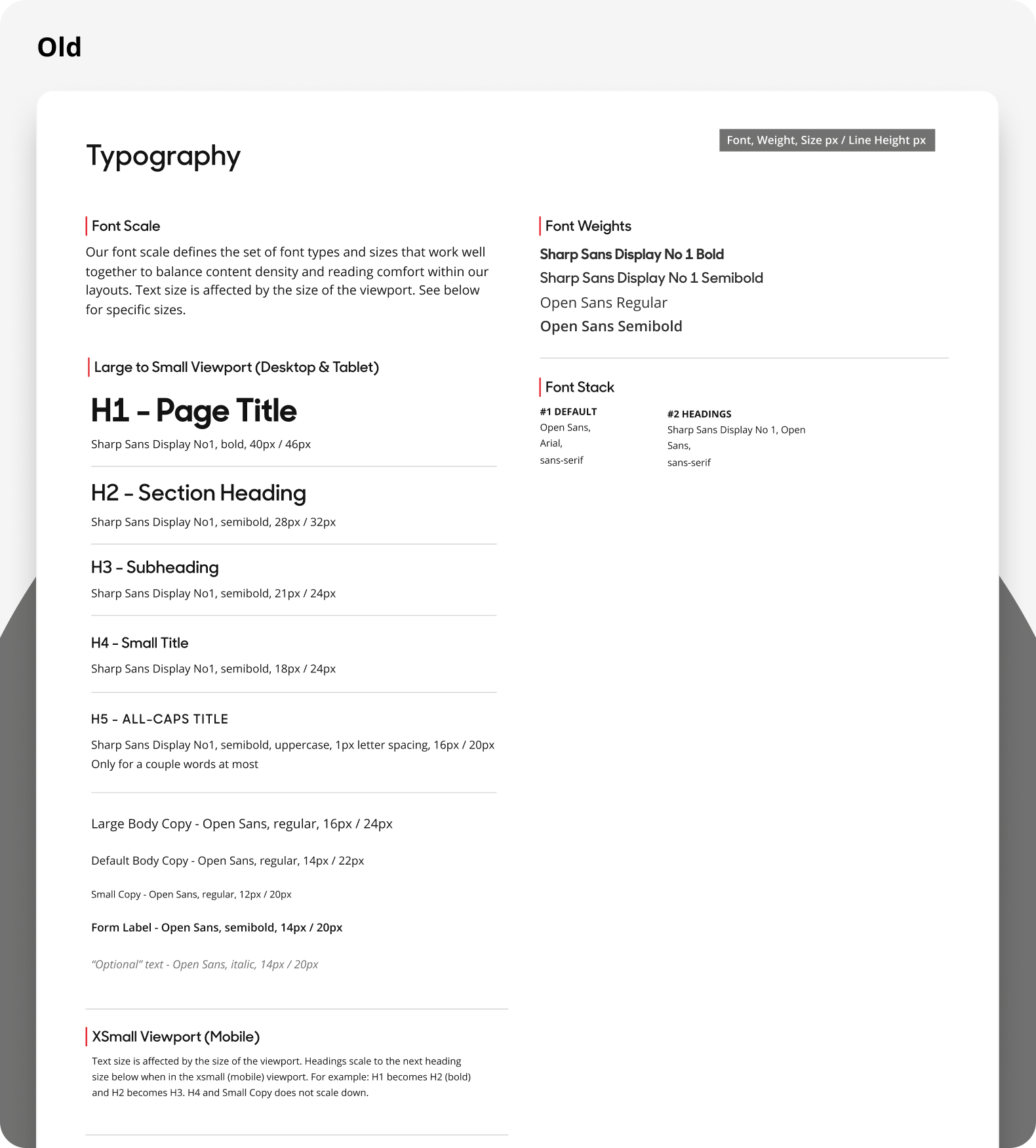
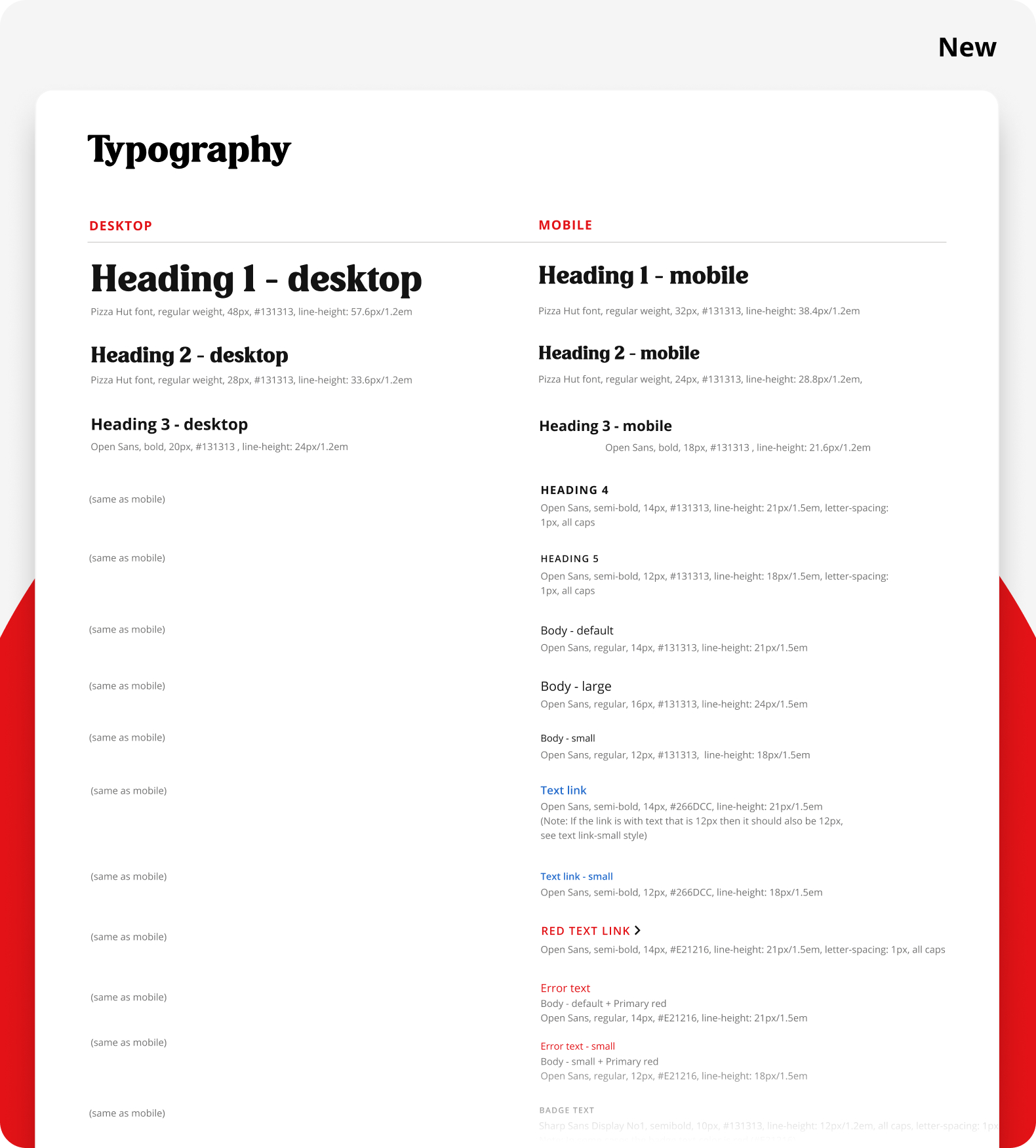
Form Element Key Unlocks:
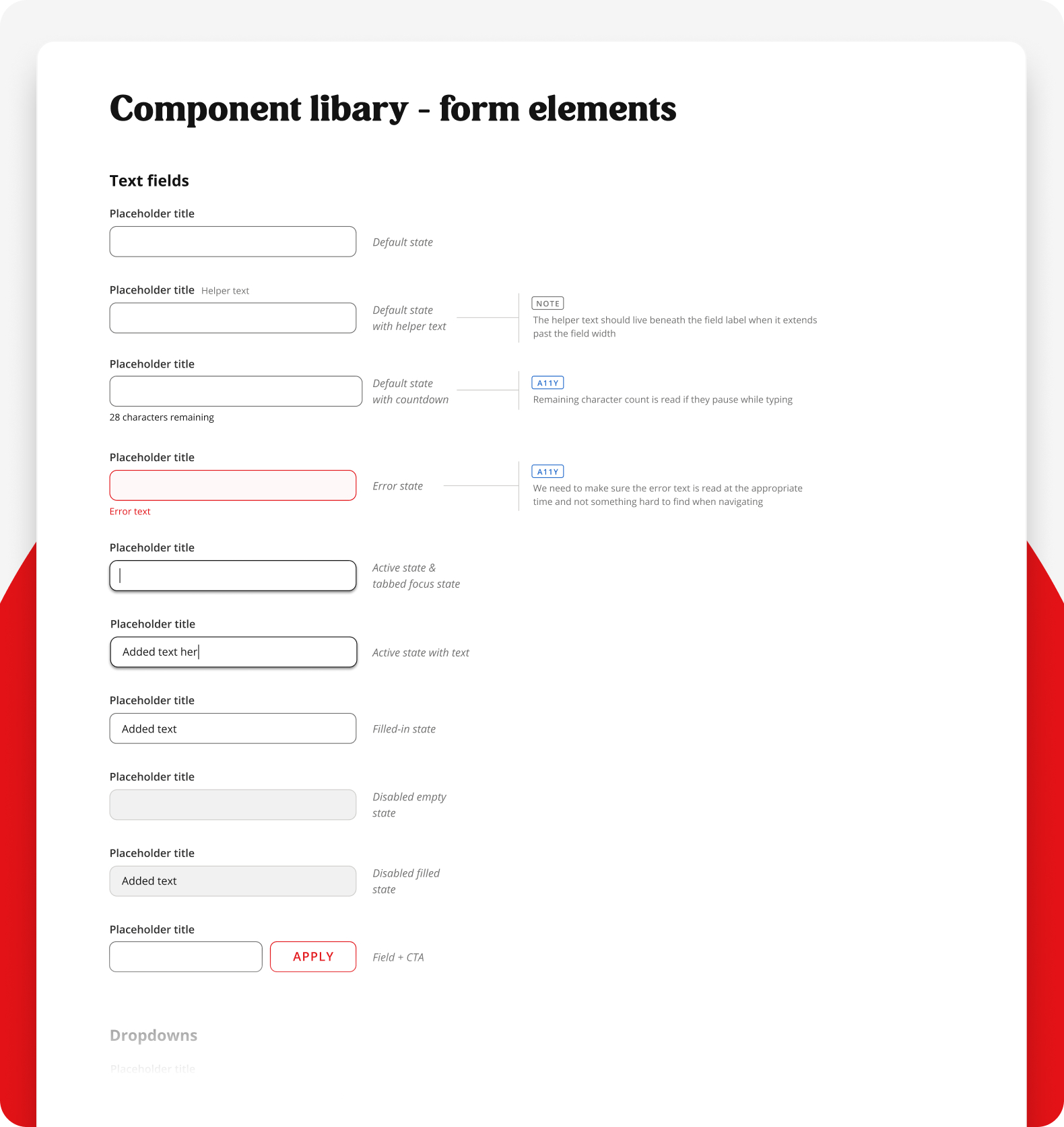
Key Unlocks:
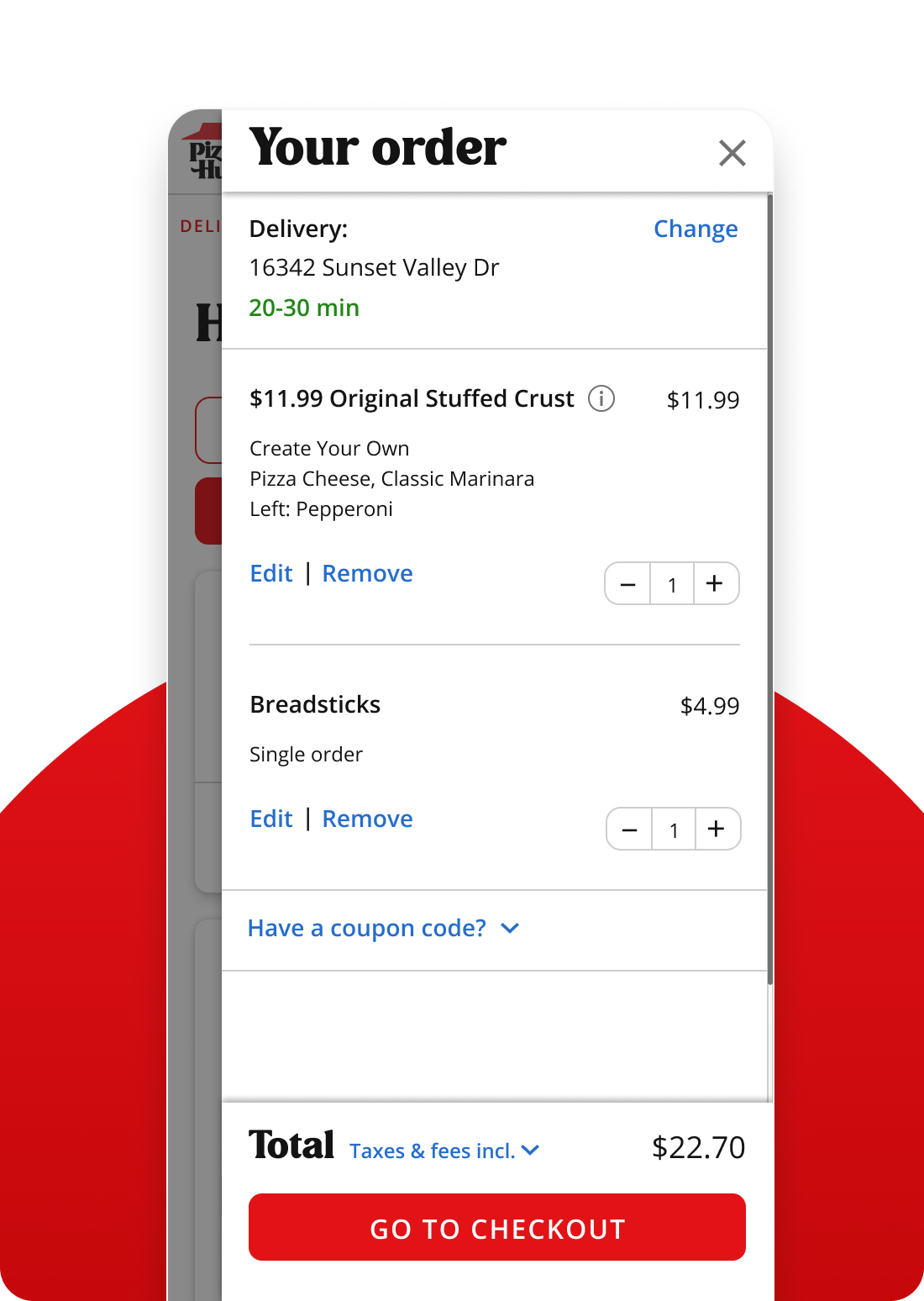
Key Unlocks:

User Testing Findings:
The designs were tested by 10 users on their mobile devices via Usertesting.com
Post-Launch Finding:
After launching the new experience, one major blocker was discovered
